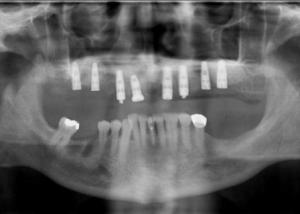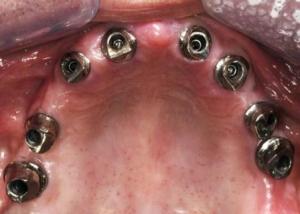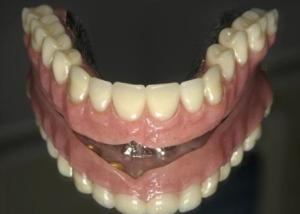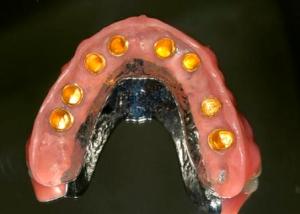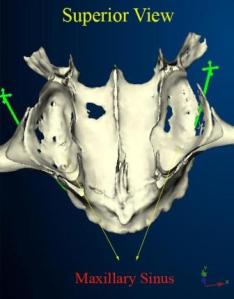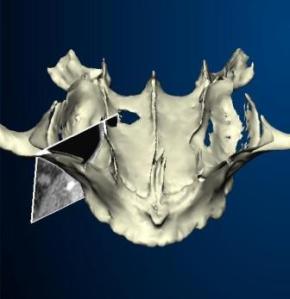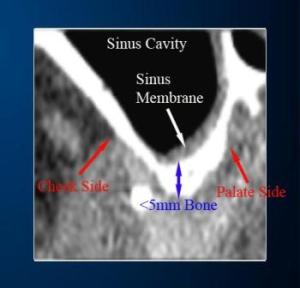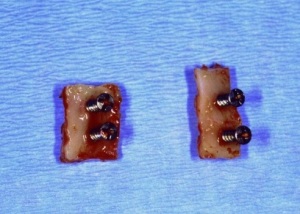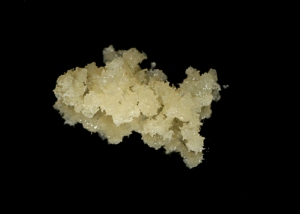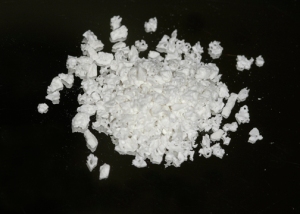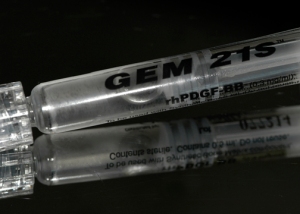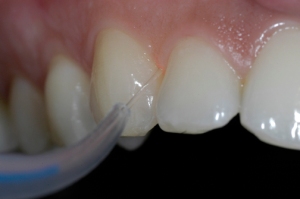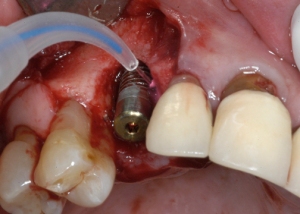Absolutely !! Oral Surgery in general and bone grafting in particular are starting to make a transition. More and more bone grafting scenarios employ cell-based or growth factor-enhanced grafting material. Four items are absolutely essential in bone regeneration if predictable results are sought.
- A matrix or scaffolding (collagen, bone mineral, synthetic grafts)
- Cells (stem cells, platelets, osteoblasts)
- Signaling molecules (growth factors, morphogens, adehsion molecules)
- Time (often underestimated)
Within minutes after an “injury” to the bone structure, platelets aggregate in the area and release PDGF (Platelet Derived Growth Factor) and a variety of TGF-beta (Transforming Growth Factor – beta) molecules, to which BMPs (Bone Morphogenic Proteins) belong. Some of the BMPs signal the Mesynchemal Stem Cells (MSCs) to “morph” into bone-precursor cells (osteoprogenitor cells). Subsequently, PDGF signals these precursor cells to divide rapidly, in order to increase their number. Once their number has increased (usually by an order of magnitude), a different set of BMPs will signal the precursor cells to “morph” again into mature bone-building cells (osteoblasts).
From this somewhat simplified molecular “injury cascade”, we can certainly appreciate the importance of stem cells.
A quick word on stem cells, because it has brought up some ethical and political issues in the past. There are three types of stem cells in our body:
- Embryonic Stem Cells (most potent, can form every tissue in our body)
- Fetal Stem Cells (almost as potent, but somehwat more restricted in what they can become. Often harvested from the umbilical cord and cryogenically frozen)
- Adult Stem Cells (a.k.a. mesynchemal stem cell. This cell is already committed to form only tissues of mesynchemal origin, i.e. bone, muscle, cartilage tissue, etc.).
The embryonic stem cells are the ones wich caused all the ethical controversy and to this day we can not perform any experiments with this cell lineage here in the U.S. This cell line is extremely potent and can form any kind of tissue from all three primitive germ layers.
Our interest, however revolves around the Adult or Mesynchemal Stem Cells. It stands to reason that an increased number of such stem cells during an “injury” or bone surgery can not only improve but also accelerate the bone healing. It is now possible to use stem cell-fortified bone graft material (several thousand times the cell concentration of the human body), for various grafting procedures. This graft material is very expensive and must be delivered within a day of surgery. Initial results look very promising across several research studies.
![]()
![]()
Filed under: Bone Grafting | Tagged: bmp, bmps, Bone Graft, Bone Grafting, Dental Implants, oral surgery, pdgf, stem cells, TGF | Leave a comment »





